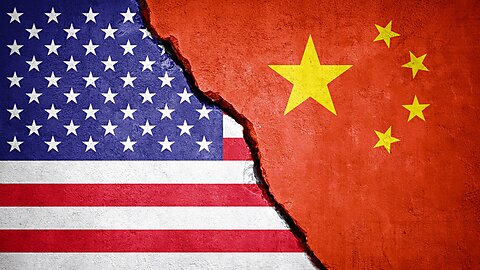Four Worthwhile Recommendations from the Select Committee for Outcompeting China

Clark Packard and Alfredo Carrillo Obregon
Last week the House Select Committee on the Chinese Communist Party (Select Committee) released a lengthy report with a number of recommendations for responding to China’s economic challenges to the United States. Like virtually all comprehensive reports with concrete policy recommendations, the Select Committee’s report was a mixed bag.
Cato’s Scott Lincicome and Clark Packard recently explained that while Beijing does pose very real geopolitical and economic challenges to the US, revoking China’s Permanent Normal Trade Relations (PNTR) status is a bad idea. That said, the Select Committee did make a number of worthwhile recommendations for addressing Beijing’s economic practices.
Join Allies to Pursue WTO Case against China
The Select Committee recommends directing the United States Trade Representative (USTR) to join with like‐minded allies in bringing a comprehensive dispute against China at the World Trade Organization (WTO). The Committee suggests the dispute should focus on Beijing’s “subsidization, support for state‐owned enterprises, and non‐market economy policies and practices.” Rather than imposing costly tariffs and signing the largely toothless “Phase One” deal with China that alienated close trading partners, Washington should have joined longstanding allies like Japan, the European Union, Korea and others to pursue a more ambitious WTO case after the Trump administration released its Section 301 report into Chinese international trade and investment practices.
As Cato scholars have long argued, certain Chinese economic practices directly violate the country’s various WTO commitments. A 2018 Cato Policy Analysis by former WTO Appellate Body Chairman James Bacchus, along with Simon Lester and Huan Zhu, provides a sound roadmap for the scope of a WTO challenge, including challenging China’s inadequate intellectual property protections and enforcement; abuse of trade secrets; the forced transfer of technology as a condition for doing business in the country; and Chinese economic subsidies.
Despite pervasive myths about the WTO’s ineffectiveness at disciplining state capitalism, China has a decent (albeit imperfect) record of complying (by removing offending measures) with adverse rulings from the WTO. To be sure, there are gaps in the WTO’s rules, particularly with respect to subsidies, but a WTO dispute is a worthwhile endeavor. (To be truly effective, such a move would require the United States to lift its longstanding hold on WTO Appellate Body nominees, which has essentially crippled the dispute settlement system).
To be sure, even if successful, a WTO dispute is not a panacea to holistically transform the Chinese economy. But it may actually work to change Chinese practices on the margin and to rally allies in defense of the rules‐based trading system. The United States cannot afford to lose more vital time in pursuing solutions via WTO dispute settlement.
Pursue Trade Liberalization
The Select Committee recommends pursuing a free trade agreement (FTA) with Taiwan and suggests other potential FTAs with Japan and the United Kingdom. Likewise, the report suggests renewing the Generalized System of Preferences (GSP), which unilaterally cuts tariffs on certain products coming to the United States from about 120 developing countries, including a number of Chinese competitors in Asia. More trade liberalization is certainly a welcome suggestion, but policymakers need to go much further.
For political reasons, the United States hasn’t negotiated and implemented an FTA with a new trading partner in more than a decade even as the rest of the world, including China, continues to pursue such agreements.
Over time, a stalled trade agenda will hurt US competitiveness and will erode US influence around the world. Simply put, the United States needs to get back in the FTA game and a good place to start would be rejoining the Trans‐Pacific Partnership (TPP), now dubbed the Comprehensive and Progressive Trans‐Pacific Partnership (CPTPP). Taiwan and the United Kingdom have both applied to join CPTPP (Japan is already a member of CPTPP). If the US were to rejoin CPTPP, it should work to quickly facilitate Taipei and London’s accession to the trading bloc.
Withdrawing from TPP was a tremendous economic and strategic error by the Trump administration. The original motivations for TPP—economic benefits, creation of new high‐quality trade rules, and geopolitics—have proven sound. Today, American exporters are on the outside looking in: they face significantly higher barriers in growing Asian markets, while American consumers face higher tariffs and other trade restrictions than consumers in TPP countries.
Perhaps most tragically, the United States forfeited its economic leadership role in the Asia‐Pacific region, ceding the ground to China. The imperative to rejoin the agreement grows every day as China’s influence and assertiveness in the region grows, as shown by Beijing’s ability to complete negotiations on the Regional Comprehensive Economic Partnership (RCEP) agreement.
Likewise, reauthorizing GSP, which lapsed in 2020, is a good idea. Now that GSP’s tariff savings are gone, some companies that relocated China‐based manufacturing to GSP beneficiary countries like Indonesia, Thailand, and Cambodia are moving production back into China. Reauthorizing this program, which enjoys broad bipartisan support, would halt this troubling trend while boosting GSP countries’ economies and their relations with the United States.
If policymakers want to encourage supply chain diversification away from China while at the same time strengthening US influence in the Asia‐Pacific region, they need to provide concrete, durable, binding and enforceable frameworks. Half‐hearted measures like the Indo‐Pacific Economic Framework (IPEF) and one‐off sectoral agreements simply aren’t up to the serious task of outcompeting China in the 21st century.
Provide Full Expensing of R&D Investments
The Select Committee recommends “[e]nacting legislation providing full expensing of R&D investment in annual tax returns ….” This is a very good recommendation. As part of the 2017 Tax Cut and Jobs Act (TCJA), domestic firms making investments in R&D are allowed to deduct those costs from their tax liability for the year in which the investments occur instead of amortizing the deductions over many years. Unfortunately, this provision began to phase out in 2023 and will do so entirely by 2026.
Because of inflation and the time value of money, a dollar today is worth more than it will be in the future. Unless full expensing is made permanent, this policy will raise the cost of R&D, resulting in less innovation and fewer new technologies. At the epicenter of US‐China competition is a battle for technological supremacy in the 21st century and one way policymakers can encourage technological breakthroughs is by making full expensing permanent.
Expand Immigration
The Select Committee notes that China is churning out science, technology, engineering, and mathematics (STEM) graduates at a much more rapid pace than the United States. The report then notes matter‐of‐factly, “It is clear the United States needs more individuals working on research and development in critical and emerging technologies.” That is true but the committee’s recommendations are largely small‐ball technocratic approaches to the issue.
The ability to attract and retain talented foreigners has long been one of the United States’ greatest strengths—and a true asymmetrical advantage over China historically. Yet sclerotic immigration policy in the US risks undermining that advantage.
Research shows that immigrants are particularly prevalent in and essential for important high‐tech industries such as semiconductors and artificial intelligence. Immigration is crucial if the United States is to continue leading the technology sector, which is at the nexus of the geopolitical competition with China. Openness to immigration is essential to keeping R&D‑intensive multinationals in the United States and out of China.
Cato immigration scholars have documented how the US is losing scientists to China and how the US should welcome Chinese immigrants. While the Select Committee is certainly right directionally, policymakers need to be much bolder and simplify and expand the immigration process.
Conclusion
The Select Committee is rightly concerned with certain Chinese economic policies that distort international trade and investment. Yet the United States will never outcompete China in the 21st century if policymakers insist on mimicking Beijing’s heavy‐handed intervention. Instead, policymakers should trust America’s traditional strengths: openness to international trade, immigration and market‐based innovation.





